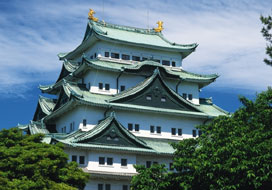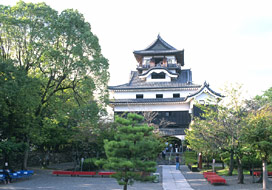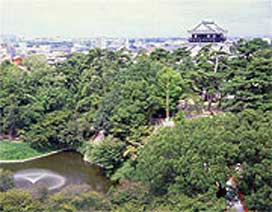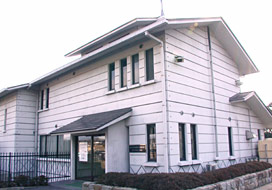Touching History
Nagoya Castle
Built in 1612, Nagoya Castle was the residence of the Owari branch of the Tokugawa clan. The main tower and the castle keep were destroyed during the Second World War, but the main tower with its golden dolphins, the symbol of Nagoya Castle, adorning its roof was rebuilt after the war. Exhibitions in the castle provide interesting details about the feudal lords of the period (the leaders who were both daimyo in the Edo shogunate as well as the political administrators of the local domain or han ) and life in the castle town.
Inuyama Castle (National Treasure)
Inuyama Castle rises above the southern bank of the Kiso River, and its beautiful Momoyama-style donjon, said to be the oldest in Japan, is designated as a National Treasure. It is also famous as the only privately-owned castle in Japan, being owned by the Naruse family since 1617. On the top floor of the donjon there is an observation platform, which provides a sweeping view of Mt. Ontake, Mt. Ena, and the vast Nobi Plain.
Okazaki Castle
Constructed in the first half of the 15th century, Okazaki Castle is where Tokugawa Ieyasu, the first Tokugawa shogun, was born on December 26, 1542. After the battle of Okehazama, Ieyasu moved to strengthen his power and consolidate his authority and made Okazaki Castle the stronghold of his forces. With the change of rule brought about by the Meiji Restoration, much of the castle was torn down, but the present castle was reconstructed in 1959.
Nagakute Kosenjo Park (Nagakute Ancient Battlefield)
This is one of the battlefield sites where Oda Nobunaga and his forces attacked and defeated those of Imagawa Yoshimoto in the battle of Okehazama in 1560. It was developed into a park in 1988 through a land readjustment project.






